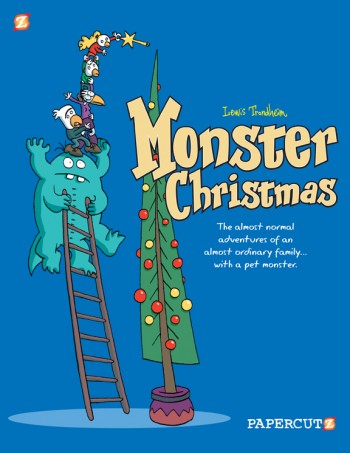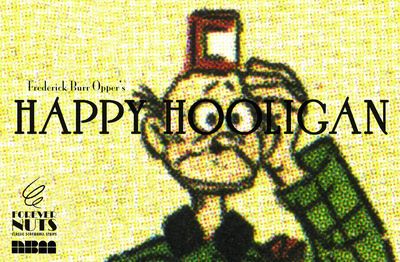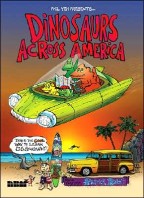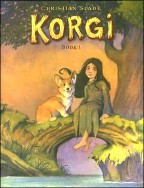Mike Gold, Stripper – An Occasional Series
Wow, that sounds disgusting, doesn’t it? But as you might surmise from the accompanying artwork, those of us who are into newspaper comics strips are often called “strippers.” This is either self-deprecating or sophomoric. But there must be a lot of us, because there seems to be about a half-dozen high-quality reprint books being issued every month. Which means I am: a) happy, and b) broke.
In order to protect my ever-shrinking finances, I was going to pass over Titan Books’ Tarzan In The City of Gold, reprinting Burne Hogarth’s work from 1937 to 1940. This is because NBM reprinted all of Hogarth’s Sunday Tarzans (and the Hal Foster stuff that preceded it) back in 1994. I have those books, although I don’t fault Titan for putting the material back in print twenty years later. Besides, the NBM books were limited to 300 copies. But Titan fooled me and sent me a review copy, bless them. They truly understand the fanboy’s middle initials are “O.C.D.”
I’m glad they did. The book starts with Hogarth’s first effort, sort of mid-story although a thorough recap is provided. The reproduction is sharper, the volume is bigger, the cost is much lower, and the design is more attractive. The indicia says this is part of “The Complete Burne Hogarth Library,” which implies eventually they’ll be reprinting his short-lived, hard-to-find but even more amazing adventure series, Drago, as well as his even harder-to-find humor series Miracle Jones.
Tarzan has attracted the efforts of a great many of comics’ finest artists, including (in politically convenient alphabetical order) Neal Adams, John Buscema, Frank Frazetta, José Louis Garcia-Lopez, Mike Grell, Jeffrey Catherine Jones, Joe Jusko, Gil Kane, Joe Kubert, Roy G. Krenkel, Russ Manning, Grey Morrow, Boris Vallejo and Julie Bell, and Tom Yeates. That is breathtaking. That is amazing. That is adjective-defying. And, in many circles, Hogarth’s work is regarded as the best of the lot. Personally, I couldn’t make a choice if my life depended upon it.
Hogarth is properly regarded as a true master of the medium, and even though it reprints his earlier work, Tarzan In The City of Gold shows us how he earned that reputation. He revisited the property in 1972 with an original hardcover graphic novel (thereby stirring up the “who did the first graphic novel” debate decades later) adaptation of Edgar Rice Burroughs’ seminal Tarzan of the Apes. Four years later, Hogarth did a sequel adapting four of Burroughs’ prequel short stories published as Jungle Tales of Tarzan. Perhaps these titles will be part of this series as well.
Be warned. I’d kill for Drago.
Tarzan In The City of Gold by Burne Hogarth with Don Garden, Titan Books, 208 pages, $39.95 hardcover.



 CR Review: Monster Christmas
CR Review: Monster Christmas Just prior to Comic-Con International, NBM’s David Seidman sent out a note suggesting to reviewers that their just-released [[[Happy Hooligan]]] comic strip collection had been overlooked. [[[Gadzooks]]], I thought, he’s right and had them rush a copy over to be read. Having just finished the 112-page volume, I can say this early example of popular comic strip humor was undeservedly overlooked.
Just prior to Comic-Con International, NBM’s David Seidman sent out a note suggesting to reviewers that their just-released [[[Happy Hooligan]]] comic strip collection had been overlooked. [[[Gadzooks]]], I thought, he’s right and had them rush a copy over to be read. Having just finished the 112-page volume, I can say this early example of popular comic strip humor was undeservedly overlooked. NBM Publishing has just launched a
NBM Publishing has just launched a 
 Weekend ComicMix Radio continues our look at the career of Dick Ayers and how a simple coincidence brought him to the office of Stan Lee and made him part of the birth of the Marvel Age Of Comics. Plus we toss out a few trick-less treats like:
Weekend ComicMix Radio continues our look at the career of Dick Ayers and how a simple coincidence brought him to the office of Stan Lee and made him part of the birth of the Marvel Age Of Comics. Plus we toss out a few trick-less treats like: Today I’ve got three books that either are for kids or look like they should be, so, if any of you are allergic to greasy kids stuff, just move on to the next post.
Today I’ve got three books that either are for kids or look like they should be, so, if any of you are allergic to greasy kids stuff, just move on to the next post.
 This past month has been a very busy one for me. I’ve been out of town three times, twice on business, and I’ve attended two trade shows and three comics conventions. It’s a lot of time to be thrust into crowds of people, whether waiting at an airport, a synagogue, a taxi line or a display booth.
This past month has been a very busy one for me. I’ve been out of town three times, twice on business, and I’ve attended two trade shows and three comics conventions. It’s a lot of time to be thrust into crowds of people, whether waiting at an airport, a synagogue, a taxi line or a display booth. My husband really liked the column I did on Mothers’ Day (
My husband really liked the column I did on Mothers’ Day ( This may come as something of a shock, but tomorrow night is the last episode of The Sopranos.
This may come as something of a shock, but tomorrow night is the last episode of The Sopranos. 








